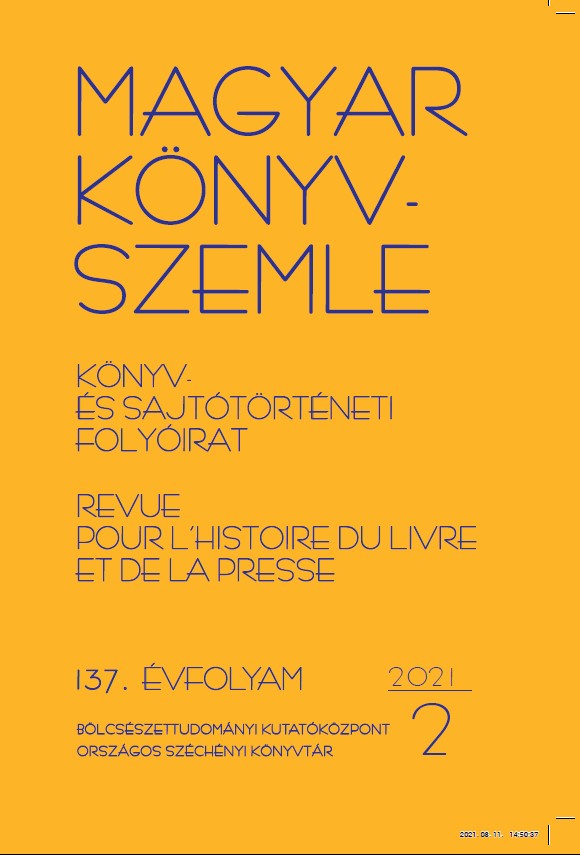„Sieur Secretaire du Palatin d’Hongrie…”, Gyöngyösi István, a magyar Ovidius szerepe, helye a murányi udvarban és a rendi szervezkedésben
Absztrakt
A tanulmány genezisét a „Wesselényi-féle összeesküvés” kirobbanásának, illetve az azt követő megtorlásoknak 350. évfordulójához kapcsolódó kutatások jelentik. Elöljáróban a költő Gyöngyösi István (1629/1630–1704) legkorábbi ismert misszilise kerül elemzése 1664-ből, történeti, irodalomtörténeti szempontok mentén. Információi, a költő adatolható nádori bécsi prokurátorsága, ügyintézői tevékenysége figyelembevételével értelmezi a következő fejezet Jacques Bretel de Grémonville lovag bécsi francia rezidens (1664–1671) diplomáciai követjelentését, ahol Wesselényi titkáráról („Sieur Secretaire du Palatin d’Hongrie), a vele folytatott bizalmas megbeszéléséről szól. A már ismert adatok újra elemzésével, rendezésével, tanúvallomási taktikák párhuzamos vizsgálata törekszik megérteni a magyar Ovidius szerepét a rendi szervezkedésben. Főúri udvari analógiák mutatják be Gyöngyösi kamarási helyét, szerepkörét a murányi udvarban. Számba vétetnek hasonló feladatkörű kollégái a nádori adminisztrációban. A különféle szerepek és titkári habitusok összevetése, az összeesküvésbeli részvétel további elemzése alapján mind erősebb gyanút fogalmazódik meg arra nézve, hogy a francia rezidenssel Bécsben tárgyaló nádori titkár nagy valószínűséggel a költő lehetett. A Gremonville dépêche-iben feltűnő „Magyarország nádorának titkár ura” személyének azonosítása során tett megfigyelések, a feltárt új adatok, szempontok a piarista Dugonics András (1740–1818) óta kíváncsian kutatott, ám újra- és újra tévútra vitt biográfia részleteire világítanak rá. Pótolni kezdik az ungi historiográfiai hasonmás leválasztásával elveszett, jó évszázadon át értékesnek vélt, ám hamis információkat. Hozzájárulnak az „aposztata protestáns” múltjától megszabadított, a nagyszombati egyetemen tanuló a költő Gyöngyösi István életművének beillesztéséhez a kora újkori jezsuita/barokk/katolikus művelődés homogén keretei közé. A nádorral az élen a murányi udvar összes vezető tisztviselője jezsuita oktatási intézményben tett szert műveltsége alapjaira. A tanulmány eredményei segítenek átértékelni a költő korábban ellentmondásosnak vélt életpályáját. A művei alapján kialakított politikai, nemesi rendi/nemzeti karakterét pedig a valós, és nem egy – számos korábbi életrajzi adatát tekintve – tulajdonképpen fiktív történeti alakhoz kezdik mindinkább kötni.



